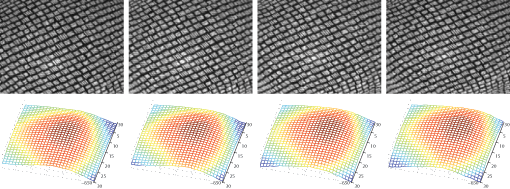3D shape reconstruction from homogeneous textures
Shape-From-Texture is the area of Computer Vision which studies the recovery of the shape of a textured object or scene.

New unpublished result. A dry dam and the side view of the reconstructed surface. Normals are recovered locally at each pixel location
Psychological studies show that texture is important in the perception of shape. Moreover it is ubiquitous.
However, the task is ill-posed for a machine and some initial assumption is always necessary to identify the characteristic of the texture conveying the shape information.

New unpublished result. A sunflower field and the side view of the reconstructed surface. Normals are recovered locally at each pixel location
We assume the most general stochastic homogeneity - the generating process is stationary under translation - which allows to consider many natural textures.
Given the initial assumptions, Shape-From-Texture is generally seen as two distinct problems: the estimation of the texture distortion, due to the geometry of the scene and the projection from the 3D world to the 2D image; and the 3D shape reconstruction, given by interpreting the measured distortion. We have contributed to both these aspects.

Video sequence showing a deflating balloon, covered with a homogeneously-textured cloth. The reconstructed sequence is fluid and captures the small variations over time, although the normals are estimated locally and each frame is processed independently. Download: [Video_and_reconstruction]
In_particular, the distortion information is characterized by the use of local spatial frequencies. A novel method is introduced which combines Fourier analysis and the use of Gabor functions to recover all the main instantaneous frequencies of the texture at each pixel.
The 3D reconstruction from the multi-scale distortion is then solved at different levels of complexity: simple planar surfaces, general surfaces with the frontal appearance of the texture available, general surfaces where no further assumption is needed, both in orthographic and perspective views.
Accuracy and robustness are demostrated in all cases. Most importantly the model applies to complex natural textures.
Other related publications
Project page updated on August, 1st 2014